(This is the first of a two-part series. You can read the second part here: How electric vehicles will drive over the electric monopolies.)
I recently had the honor of facilitating a panel on the impact of electric vehicles on the grid. It was part of an event hosted by the Center for Distributed Energy at Georgia Tech and the center’s leader, Dr. Deepak Divan. The panel included several execs from the companies shaping the EV revolution: Patrick Bean from Tesla, Mike Whitlash of UPS (huge fleet owner) and Jonathan Colbert from Mercedes Benz.
We discussed a wide range of topics from the rate of EV adoption across cars, fleets, and heavy-duty trucks; lessons learned from working with utilities as each of these companies built out charging networks; and observations on what is happening outside the US, especially in China.
Some of my biggest take-aways were just how beneficial EVs will be to the grid and the utility industry. But I also learned that EVs may be even more disruptive than they are helpful, so be sure to check out my second article, How electric vehicles will drive over the electric monopolies, part 2.
Just how big will the EV marketplace become?
To get a sense for just how quickly the EV market is growing, I reached out Loren McDonald of EVAdoption, one of my favorite strategy and data firms in the EV space. Loren told me:
The growth in EVs is building toward an inflection point beginning in about 2022 and will then see new EV sales nearly double by 2025. Sales of EVs in the US are forecast to reach 1.5 million in 2025 and 3 million by 2028, accounting for an estimated 18% of new vehicle sales. More significantly, California should reach 30% EV share of new vehicle sales in 2025 and 50% by 2029. The number of US EVs will grow from a cumulative 1.5 million in 2019 to more than 14 million in 2028.
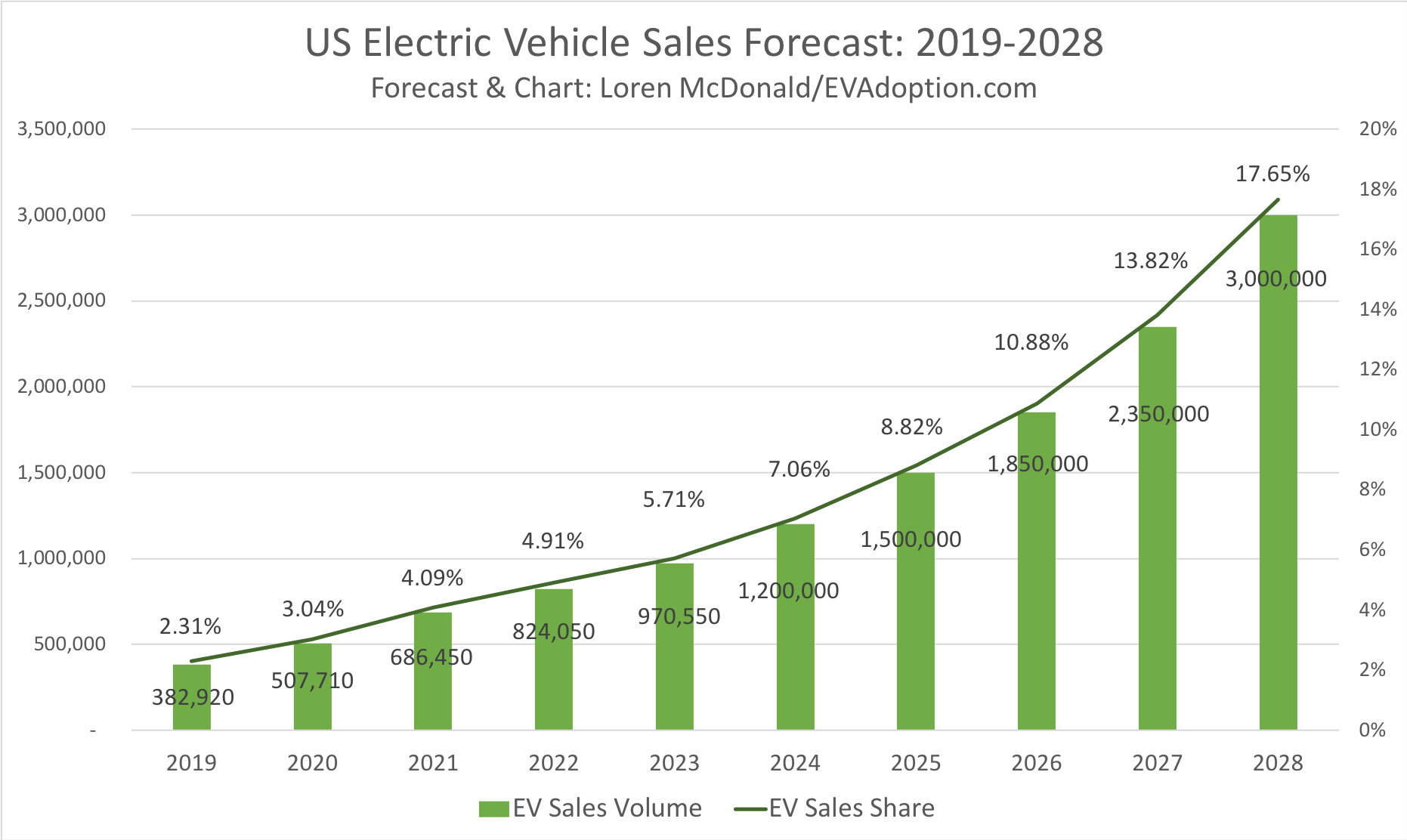
Loren also shared some other statistics that drove home the point:
- The average BEV range will increase to an estimated 302 miles in 2023, from 220 in 2019 and 114 in 2015,
- From 41 EV (both BEV and PHEV) models available in the US in 2019, we’ll see 60 additional new models introduced by 2022.
- As of September 15, 2019 there are more than 67,000 public EV charging outlets (connections) available at nearly 23,000 locations. In 2011 there were only 3,400 outlets, and we expect the number to reach 100,000 in 2023.
Electric vehicles are one of the best things to happen to the grid in decades
Growth – EVs will recharge a stagnant utility industry
After a century of consistent growth, electricity consumption in the US stagnated about 10 years ago, with usage stuck around 3.7 billion megawatt hours. The culprit is energy efficiency. Despite continued population growth, efficiency technologies like LED bulbs have been so effective that demand for electricity has plateaued and is even shrinking in some places. But EVs will recharge the growth of the power industry. Not since air conditioning took off in the early 1900s has the utility business had a catalyst like EVs to drive its growth. According to the National Renewable Energy Laboratory (NREL), EVs and other new forms of electrification will increase electricity consumption by 20%-38% by 2050. As consumers and businesses shift their vehicles from fossil fuels to electricity, their spending will shift from gasoline to cleaner, cheaper energy from their electric utility.
GET MONTHLY NEWS & ANALYSIS
Unsubscribe anytime. We will never sell your email or spam you.
V1G – Controlling when EVs are charged can ease grid congestion
One of the most complex and expensive parts of managing the grid is “peak load.” This often occurs on weekdays after 5pm when families return from school and work. All at once, millions of stoves, clothes washers, and air conditioners turn on, spiking demand, and pushing power lines and power plants to their maximum capacity.
Many experts are concerned that EVs will make peak load even worse. But, as it turns out, EVs may also be the ideal solution. Unlike your stove or clothes washer, which needs to work the moment you turn them on, EVs can be charged at any point throughout the night (or during the day when there is excess solar). Imagine if your utility actually controlled when you car charged so they could optimize it for when they have the most capacity. I call this V1G — a simplified derivative of a more complex idea called V2G, which I will talk about next.
A 2019 study from Lawrence Berkley National Labs looked at this idea for the state of California. They found that scheduling the electric vehicles to charge in the middle of the day would be like adding 1 gigawatt of storage, and would save the state $1.45 billion to $1.75 billion in stationary battery costs.
V2G – Vehicle to Grid
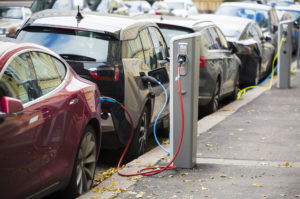 As EV growth continues, the collective battery capacity across all those cars is predicted to far exceed the batteries deployed purely for the grid. This enormous collection of EV batteries will likely be the single best solution for balancing the intermittency of clean energy from the sun and wind. Imagine a hot summer afternoon with millions of air conditioners all turned on full. Rather than having to spin up expensive peaker plants, utilities can call on these two-way charging EVs and have them dump some of their extra charge back into the grid to help power the air conditioners. The utility spends less money. The car owners get a small stipend. And fewer fossil fuel power plants are needed, reducing greenhouse gases and pollution.
As EV growth continues, the collective battery capacity across all those cars is predicted to far exceed the batteries deployed purely for the grid. This enormous collection of EV batteries will likely be the single best solution for balancing the intermittency of clean energy from the sun and wind. Imagine a hot summer afternoon with millions of air conditioners all turned on full. Rather than having to spin up expensive peaker plants, utilities can call on these two-way charging EVs and have them dump some of their extra charge back into the grid to help power the air conditioners. The utility spends less money. The car owners get a small stipend. And fewer fossil fuel power plants are needed, reducing greenhouse gases and pollution.
Lawrence Berkley National Labs also analyzed the opportunities for V2G in California. They found that if just 30%of workplace chargers and 60% of home chargers allowed EVs to provide power to the grid, it could offset up to $15.4 billion in stationary storage.
While V2G is incredibly exciting, it faces some challenges. At the moment, only Nissan’s Leaf EV offers two-way charging. When I asked the executives on my panel from Tesla and Mercedes about their plans, they both said there were no immediate plans to offer two-way charging because it wasn’t something their customers were asking for yet.
The Freeing Energy Perspective
Renewable energy and electric vehicles are largely separate industries. For the most part today, they only overlap when EV fast charging requirements require changes to the local grid. But, the truth is they are deeply intertwined and they will each have a profound impact on the other. EVs and the huge collective battery storage they represent will prove to be the single best solution for the intermittency of solar and wind. The sooner grid planners begin to embrace the opportunities, the sooner they can capitalize on them and the faster we can adopt clean energy.

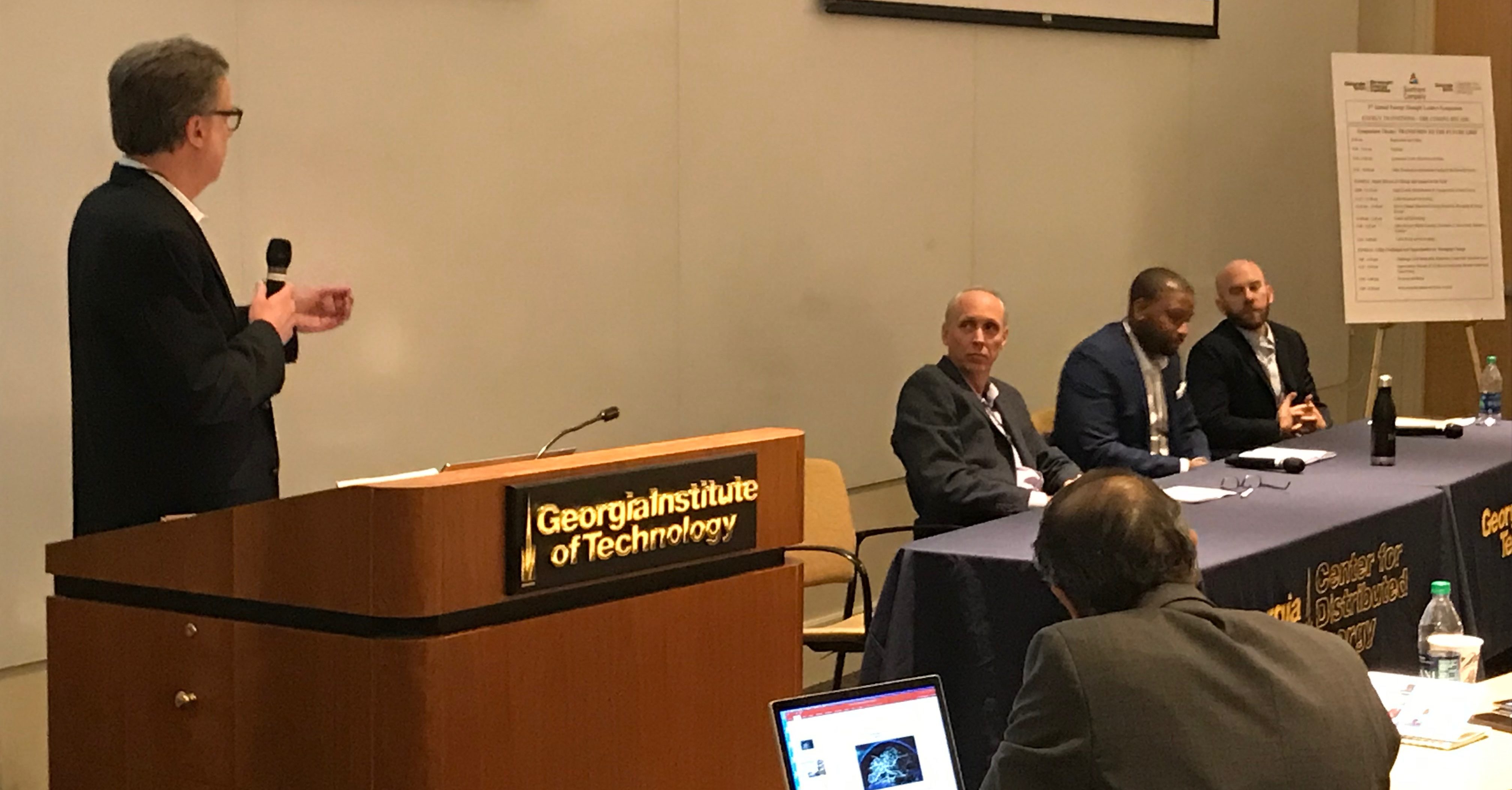
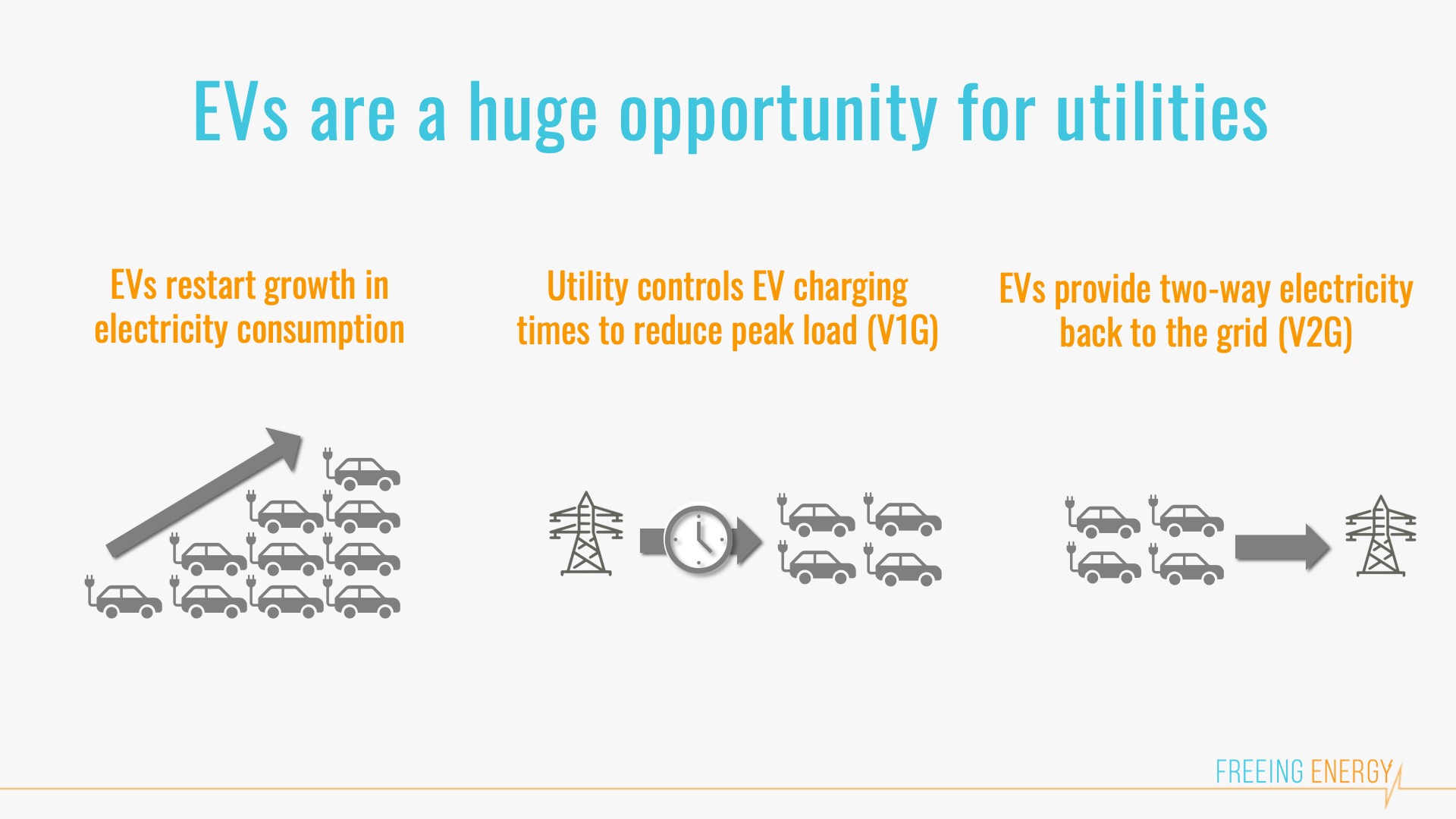
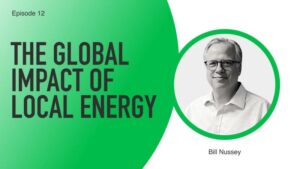
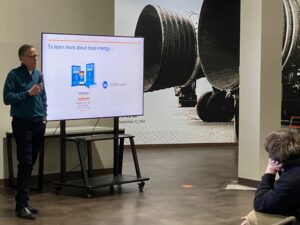
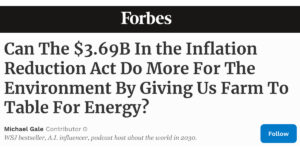
11 Responses
Great article Bill and thanks for including some of my statistics and forecasts. Some very exciting V2G estimates from Lawrence Berkley National Labs … but this point from your article is truly frustrating: At the moment, only Nissan’s Leaf EV offers two-way charging. When I asked the executives on my panel from Tesla and Mercedes about their plans, they both said there were no immediate plans to offer two-way charging because it wasn’t something their customers were asking for yet.
I think with the wildfire safety shutdowns starting to happen in California, I think we will see that perspective change pretty significantly.
Thanks Bill for those really useful facts & insights from your recent panel.
Although I am convinced that electric cars are the future for personal transport, I suspect large vehicles will soon be hydrogen powdered. When ‘green’ hydrogen can be produced in a large scale cost-effective & sustainable way it will be the commercial fuel for the future.
On a slightly different note, a bigger challenge going forward is how we can reduce the amount of energy needed to operate buildings. Currently most buildings are not designed to minimise the amount of energy needed to keep them at an ideal temperature. Could an initial aim be for all new buildings to be net-zero energy users? Preferably we should construct zero energy buildings that minimise the energy they use via their design. We need governments to change building regulations so that the whole-life cost of a building is prioritised over the initial construction cost. Maybe even go as far as to not grant planning approval for any buildings that don’t meet the highest standards of energy efficiency & maximum use of renewable energy.
I am disappointed that you are predicting the unfreeing of energy in the U.S. by expanding the AC grid to service electric vehicles.
A far better approach is to stop pretending that natural gas, because some of it is fossil fuel, will magically go away.
Electric energy, delivered by natural gas, costs half what the indefensible grid charges. More and more of it does not convert by way of combustion, but rather by fuel cell, as in the huge installation in progress in Connecticut.
As long as natural gas is a byproduct of the fuel for airlines and trucks, it will be free at the well head, and using it to produce electricity, adds no greenhouse gasses [GHG], compared to flaring it off.
This GHG free energy is a much less expensive way to deal with long term intermittency and high EV charging currents, than huge batteries, or the expansion of the AC grid.
Natural gas is a natural 30 year bridge to totally clean energy. Later, if a reformer produces CO2, it can be captured and used. Direct decomposition of methane produces pure carbon, and this has been illustrated on a small scale.
Newt, thank you, as always, for helping continue the discussion. The big benefit of fuel cells is that their lack of combustion eliminates SO2, NOx, etc. Can you explain a bit further about how natural gas can be used to create no GHGs? It’s my understanding that normal fuel cells being powered by natural gas creates CO2.
Nifty info – thanks for sharing.
Hubby and I aren’t noticing a difference in our power bill charging our EV every night. We have a larger HVAC load than the average human so others might see a slight difference. And I’m guessing that charging a larger vehicle like a semi would increase the load. But I’m still finding it hard to imagine that EV-charging is going to increase our load faster than efficiencies are decreasing it? Do we have math on that?
Also, all the EVs we’ve had let us specify when they draw charge so we don’t necessarily need the utilities to control this – we already have it set for off-peak. If we got a flyer in the mail from our power company asking that we do it in the middle of the day instead, we’d likely comply if the vehicle is at home during that time. (It’s usually not, though.)
Michelle, I agree it’s tough to see big growth in electricity consumption but consider these trends: 1) efficiency upgrades have been underway for years so many of the early gains have already been counted, 2) there is a shift from natural gas heating (and water heating) to electric heating, and 3) EVs are expected to continue accelerating their penetration for the next twenty years so cumulatively, they will really move the needle.
I looked through my library and found this report as a good example of predicted growth in electricity consumption: https://www.nrel.gov/news/program/2018/analysis-demand-side-electrification-futures.html. And based on your great question, I’ve updated the article to add it in.
Bill, At present, most, large scale fuel cells create CO2. But in the big picture, if the methane isn’t used, it will be flared off, releasing the CO2, and some other bad stuff. So, in total, using methane doesn’t add to GHG’s untill we are using all of the byproduct methane. By then, likely the fuel cells that separate out the CO2, for other uses, and some of these are in operation, or the reformers, under development, that decompose methane into hydrogen for electricity production, and pure black carbon, which is not dangerous to the atmosphere, and has practical uses, will take over.
Byproduct methane will decrease, only when we power airplanes, trucks, and trains, in a different way. But renewable methane from tents over stockyards and dairies, and anaerobic digesters, will continue.
Local power companies, when they do both gas and electric, can take over local generation for electric car service stations, by installing DC Transformer coupled solar, on their power line easements across cities. In this form, the solar panels ignore the narrow shadows from the poles and lines. The gas and electric companies can cover the intermittency with methane fuel cells, which have zero GHG impact, until we stop flaring off methane. By that time, the fuel cell or reformer stage can be made to be GHG load free.
This is the sort of plan that I always thought Freeing Energy was all about.
The huge AC energy grid is already indefensible from cyber attack, and loses far too much power due to power factor problems, and skin effect. All of this would be much worse by adding the proposed back-and-forth exchange with all of the electric vehicles, What is here proposed, is the UNFREEING of energy, on a massive scale.
Newt, I look forward to your thoughts on my part 2 article. It goes in a very different direction and explains how EVs will allow us to reduce our dependence on the grid.
In terms of natgas versus powerlines, I’ve not seen any data comparing the net energy losses of the two but my guesses it that leaks represent a net larger amount of energy loss than transmission lines. Also, I think the future of electricity will shift the emphasis (and dependence) on lengthy transmission lines and more towards nearby distribution lines, which will tilt the energy loss challenge a bit more towards electricity.
My perspective on freeing energy is that virtually everything we do will necessarily be very incremental. So even if natgas/methane has GHG and self-reliance advantages, fuel cells are just too expensive to be widely adopted anytime soon. The grid is already in place so I believe many emerging business models will take advantage of the sunk costs and low marginal costs of using it.
As a small tactical side note, I believe that shadowing on solar will be reduced to a trivial annoyance in the coming years. I’m involved with a startup that tackles this directly (and very inexpensively) and we’re not the only ones working on this widespread problem.
As always, I really appreciate your honest thoughts. Please keep them coming.
Bill,
If fuel cells were too expensive, they wouldn’t be used on a small scale, to power forklifts, or on a large scale, to power multiple data centers in Connecticut.
I think that your anti-shadow enterprise might profit by comparing methods under a mutual Non Disclosure Agreement [NDA].
I was watching a TV show, and they claimed that taking the CO2 from a steel manufacturing exhaust stream, adding hydrogen to the CO2 would create (magically?) methane that could be burned in the process of making the steel. It is a way to both reduce the natural gas fuel costs and reduce the overall CO2 emissions. However unless they are producing green hydrogen, it might be a net loss.
I don’t understand the chemistry of all of that. My Uncle John Holmes ran the AQMD (1970 – 1999) and might have some idea, but he died of cancer about 7 years ago.
Ford and Rivian are both facing a battery supply problem. Ford will only produce about 15,000 2022 F-150 electric trucks, and hopes to have more batteries for 2023, and 2024. By 2025 model year, with their three battery plants each making 43,000 MW of batteries, they should have plenty for all the vans, cars and F-150’s they want to produce. In 2020, SKI only made about 40,000 MW of batteries worldwide, and by the end of 2026 they should be making over 200,000 MW (including what they will produce for Ford).
SCE for years (1980 to present) had 5 AM radio channels that could transmit to HVAC units and shut off the compressor for up to 15 minutes every hour. This could reduce demand on the grid by several MW each time they activate one channel. This was to prevent brownouts. If a battery charger could listen for this same radio frequency, it could change it’s charge rate to say 50% or 25% when the channel is active. Or internet controls could provide a more precise charge rate, anything from 0% to 100 % is OK, as we have more solar power than we can consume right now.
I like the idea of reducing the charger output via a internet connection to the power company. The power company could post that battery chargers should be running at 1% to 100% based on the current load and amount of spinning reserves they have at that 5 minute interval. Once there are 15,000+ electric battery chargers connected via internet, a change in charge rate of 3% might reduce overall load demand by 5 – 25 MW, without significantly changing the number of hours it will take to fill the car battery.
Rivian charge profile is “Normal – fill the battery to 70% of full then stop charging”. Extended range, fill the battery to 80% then stop charging. “Max Fill” and it will fill the battery to 100% of it’s capacity, then stop charging, however they will state that the overall battery life will be reduced by charging over 80% on a regular basis.
Rivian batteries are cooled by a refrigeration compressor when charging quickly, and when discharging. If they are running at less than 60F air temp, the can air cool the battery cooling fluid without the compressor running. So V2G will cause the compressor to run more hours when discharging quickly, or recharging, consuming more of the energy that is being drawn from the battery. IT might not be as effective as one might guess it to be.
It is more likely that a larger battery, such as the Bluebird 265 KW battery might work better with V2G systems. The small car batteries are like a fart in the wind.
Consider this. The Big Creek pumped hydroelectric system can consume 275 MW for several hours each night, and then provide up to 8 hours at 800 MW during the day (drawing out a lot more water than put in by the 275 MW motor per hour). So yes it will consume more energy to fill the upper reservoir than they get out of it during peak generation. However it can produce 800 MW for several hours each afternoon. The elevation change is over 800′. It was a early hydroelectric dam system, and SCE engineers also worked on the designs for Hoover Dam.
California imports about 8,000 MW of power for about 12 hours each night, when the solar is not producing power. There is not a 96,000 MW battery that can make up that much power each night, and also they would require 120,000 additional MW to recharge that battery each day. There are not that many solar panels in California yet. And the 10,000 car batteries that could potentially put out say 50 KW each is only about 500 MW that can be put back into the grid, and sometime that night those 50 KW would be returned to all 10,000 cars, consuming 600MW from the grid, and perhaps even more power if they must run a refrigeration compressor to keep the batteries cooler while discharging and recharging them at night. So V2G I don’t think has enough capacity to work in significant numbers.
What will work? Install another 18,000 MW of wind power. Then when you have excess wind capacity, and no place to sell it, curtail the excess wind turbines for a couple of hours. Or produce green hydrogen.
Install triple the geothermal power in California. They have 950 MW now, increasing this to 3,000 MW would be great, 4,0000+MW even better.
How about running a electric class 8 truck with a small turbocharged 2L engine on either hydrogen or CNG? The small engine could produce about 120 – 150 KW per hour, or 2 KW per mile, about what Tesla claims their class 8 truck will need to go down the road. Even if the truck consumes say 3 KW per mile, the 120 KW engine could keep up, (2 KW per minute, while the battery draw will be 1 KW per minute). At a meal break for 30 minutes, the battery can charge by 60 KW, and the battery capacity of say 100 KW would only slowly discharge over a 200 mile run, then could recharge on the downhills, and when breaking getting off the freeway.
It was reported that a Honda Civic running on CNG would produce as much pollution in 100,000 miles as a 1980’s car would in 500 miles.